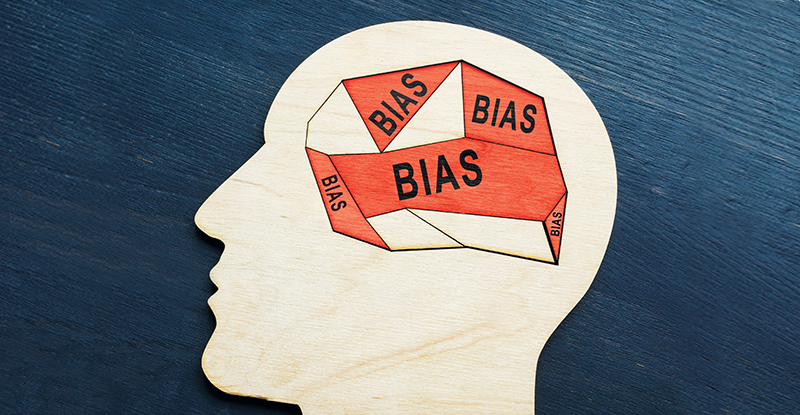
This article builds on concepts explored in “Objectivity is a Hallmark of the CPA Profession,” published in the November/December 2019 issue of CPABC in Focus. It also draws from the discussion paper Identifying and Mitigating Bias and Mis- and Disinformation, published by CPA Canada in February 2022.
The CPABC Code of Professional Conduct (CPA Code) notes that objectivity is a fundamental ethical principle for our profession.
The preamble to the CPA Code states: “Chartered Professional Accountants do not allow their professional or business judgment to be compromised by bias, conflict of interest or the undue influence of others.”
To gauge objectivity, the CPA Code employs the following criterion: Would an educated, reasonable observer, armed with sufficient knowledge of the facts, conclude that an ethical situation or circumstance poses an unacceptable threat to a member’s objectivity and professional judgment?
For CPAs, the key when making important decisions, especially when facing an ethical dilemma, is to gather and properly assess reliable and accurate information. If we don’t gather information with due care and consideration, biases can enter into our decision-making.
Biases affecting decision-making
In February 2022, CPA Canada published the discussion paper Identifying and Mitigating Bias and Mis- and Disinformation—the third in a four-part series that explores ethical leadership in the modern era.1 In addition to describing the ethical perils of misinformation and disinformation, the paper highlights the danger of cognitive bias (conscious or unconscious). It lists the following eight biases (as identified by the International Ethics Standards Board for Accountants) as posing threats to objectivity:
Anchoring bias
Anchoring bias is a phenomenon where people rely too heavily on the first pieces of information they receive when making decisions. Even if they’re unreliable, these initial bits of information, or “anchors,” can influence subsequent judgments about new or supplemental information. This can occur in negotiations as well—a 2001 study2 found that the first party to make an offer in a two-party negotiation consistently achieved the most favourable outcome, regardless of whether they were offering to buy or sell, as simply making the first offer tended to “anchor” the negotiations in their favour.
Automation bias
As described in the CPA Canada discussion paper, automation bias is “a tendency to favour output generated from automated systems, even when human reasoning or contradictory information raises questions as to whether such output is reliable or fit for purpose.”3 As we increase our reliance on information generated from automated systems or machine learning, we need to consider the limitations in how that information was generated or gathered. As noted in the discussion paper, the creators of automated information systems could potentially apply their own biases to data sets, whether intentionally or not. So it is always appropriate to ask the question “Does this make common sense?” when assessing the results of information generated by automated systems.
Availability bias
Availability bias, also referred to as “recency bias,” is the “tendency to place more weight on events or experiences that immediately come to mind or are more readily available than on those that are not.”4 It occurs when an individual relies only on recent or readily available information when making a decision rather than considering all relevant information. Consider, for example, an individual who makes an investment decision based on a breaking news story, even though they may not have the full picture.
Confirmation bias
Confirmation bias is the tendency to search for, interpret, favour, and recall information that confirms pre-existing beliefs or hypotheses, while giving less consideration to alternative possibilities and information.5 It is perhaps the most insidious of biases, because it provides what every individual wants: validation. This can lead people to discount information that contradicts their beliefs and seek out only the information that supports their views, even if this information is neither factual nor objective. Confirmation bias also makes it difficult for people to change their minds, even when presented with new and convincing evidence.
Groupthink
Groupthink is the “tendency for a group of individuals to discourage individual creativity and responsibility and as a result reach a decision without critical reasoning or consideration of alternatives.”6 It occurs when the desire for harmony or conformity within a group is greater than the desire for independent thought. This is especially problematic if the group is insulated from outside perspectives and information. One infamous example of groupthink occurred at the Ford Motor Company in the 1950s, when the company designed and launched the Edsel, a new car model that was unusual looking, expensive to manufacture, and unreliable. Rather than paying attention to public opinion, the company relied solely on their own internal hype machine.7 It was an expensive flop.
Overconfidence bias
The Edsel story is also an example of overconfidence bias, which occurs when a decision-maker is too confident in their own abilities or in the accuracy of their own predictions to consider the potential for error or ambiguity.8 Overconfidence can lead individuals to make decisions that are ill-informed or based on flawed assumptions. It can also lead to tunnel vision.
Representation bias
Representation bias, also known as “sample selection bias,” is “a tendency to base an understanding on a pattern of experiences, events or beliefs that is assumed to be representative.”9 Consider, for example, if individuals assume that a sample of data accurately reflects the population, but certain groups or individuals are actually underrepresented or overrepresented.10 This kind of bias can lead to inaccurate conclusions or generalizations, and it can also lead to the development of policies, practices, and tools that are neither effective nor inclusive.
Selective perception
Selective perception is the “tendency for a person’s expectations to influence how the person views a particular matter or person.”11 This can happen unintentionally when an individual notices and pays greater attention to information that confirms their pre-existing beliefs or attitudes, or intentionally, when an individual chooses to ignore information that contradicts their beliefs. In essence, this is a form of confirmation bias.
Suggested approach to meeting professional obligations
CPA Canada has suggested a layered approach to decision-making when meeting professional obligations. These layers are:
- Taking care to produce information that is accurate, objective, and unbiased;
- Ensuring that information is reliable;
- Not passing along misinformation and disinformation; and
- Proactively countering bias and misinformation and disinformation.
In an upcoming issue of CPABC in Focus, we’ll explore the perils of misinformation and disinformation in greater depth and describe how to apply each of these four aforementioned layers to relevant situations.
Do you need guidance?
The guidance in the CPA Code is designed to help you understand how the rules should be applied. CPABC’s professional standards advisors are also here to help. You can consult them for confidential guidance to ensure that you stay compliant with the CPA Code and the CPABC Bylaws when navigating difficult situations. Contact our advisors by email.
This article was originally published in the March/April 2023 issue of CPABC in Focus.
Footnotes
1 This series falls under the “Trust and Ethics” category of CPA Canada’s Foresight initiative.
2 Adam Galinsky and Thomas Mussweller, “First Offers as Anchors: The Role of Perspective-Taking and Negotiator Focus,” Journal of Personality and Social Psychology, October 2001.
3 CPA Canada (5).
4 MasterClass, “Recency Bias Definition: How Recency Effect Impacts Decisions,” April 7, 2022.
5 Gordon Scott, “Confirmation Bias Definition,” Investopedia, September 29, 2022. See also: Chu Xin Cheng, “Confirmation Bias in Investments,” International Journal of Economics and Finance, vol. 11, no. 2, 2019.
6 CPA Canada (5). See also: Will Kenton, “What Is Groupthink? Definitions, Causes, and Characteristics,” December 5, 2022; and Fred C. Lunenberg, “Group Decision Making: Potential for Groupthink,” International Journal of Management, Business, and Administration, vol. 13, no. 1, 2010.
7 Richard Feloni, “4 Lessons from the Failure of the Ford Edsel, One of Bill Gates’ Favorite Case Studies,” September 5, 2015.
8 MasterClass, “What Is Over Confidence Bias? 3 Types of Overconfidence Bias,” June 2, 2022.
9 CPA Canada (5).
10 Mary Reagan, “Understanding Bias and Fairness in AI Systems,” Towards Data Science, March 24, 2021.
11 CPA Canada (6).



